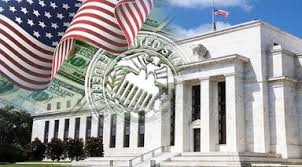What Does the Latest US Nonfarm Payroll Data Tell Us? Experts Weigh In
US nonfarm payrolls rose by only 73,000 in July, the weakest increase since October 2023.
The unemployment rate rose to 4.2 percent. Employment growth in the last three months has been limited to an average of only 35,000 jobs. The labor force participation rate also declined for the second consecutive month. Employment data based on the household survey pointed to a contraction in July.
According to experts, this data points to the weakest employment growth since the beginning of the COVID-19 pandemic. The rising unemployment rate, particularly despite declining labor force participation, highlights the weakening of the labor market.
Average hourly earnings increased by 0.3 percent month-over-month, in line with expectations, while the 3.9 percent annual increase exceeded inflation. This indicates a real increase in workers' purchasing power.
Commentary on the economy is divided. Optimists view inflation as remaining under control and the recovery in consumer confidence, despite tariffs partially impacting prices. On the other hand, pessimists believe that spending is declining, especially among young people, that economic growth is increasingly reliant on the wealthy, and that price sensitivity is increasing.
“Almost all major indicators have been quite stable since last fall,” said Guy Berger, a senior researcher at the Burning Glass Institute, indicating a cautious balance in the economy. However, Berger cautions that this stability may not last due to factors such as trade tariffs, immigration restrictions, and new tax regulations.
The release of nonfarm payrolls data triggered a sharp repricing in the US bond market. While expectations for a rate cut had weakened following hawkish statements from Fed Chair Jerome Powell earlier this week, these expectations quickly gained strength following the weak employment data. A 114 basis point rate cut over the next 12 months has begun to be priced in. The probability of a September rate cut has risen to 64%.
Markets reacted quickly after the data: Spot gold rose $38 per ounce in 15 minutes, reaching $3,340. The US dollar index, DXY, fell more than 100 points to 99.11.
Disclaimer: The content of this article solely reflects the author's opinion and does not represent the platform in any capacity. This article is not intended to serve as a reference for making investment decisions.
You may also like
The Fed’s hawkish rate cuts unveil the illusion of liquidity: the real risks for global assets in 2025–2026
The article analyzes the current uncertainty in global economic policies, the Federal Reserve's interest rate cut decisions and market reactions, as well as the structural risks in the financial system driven by liquidity. It also explores key issues such as the AI investment boom, changes in capital expenditures, and the loss of institutional trust. Summary generated by Mars AI This summary was generated by the Mars AI model, and the accuracy and completeness of its content is still undergoing iterative updates.

Cobo Stablecoin Weekly Report NO.30: Ripple's Comeback with a $40 Billion Valuation and the Stablecoin Transformation of a Cross-Border Remittance Giant
Transformation under the wave of stablecoins.

Bitrace's Perspectives and Outlook at Hong Kong FinTech Week
During the 9th Hong Kong FinTech Week, Bitrace CEO Isabel Shi participated in the Blockchain and Digital Assets Forum...

